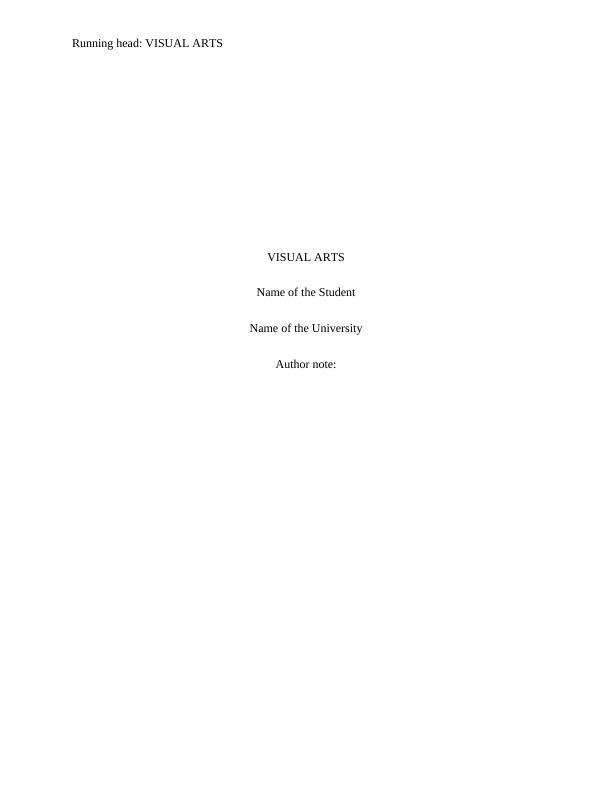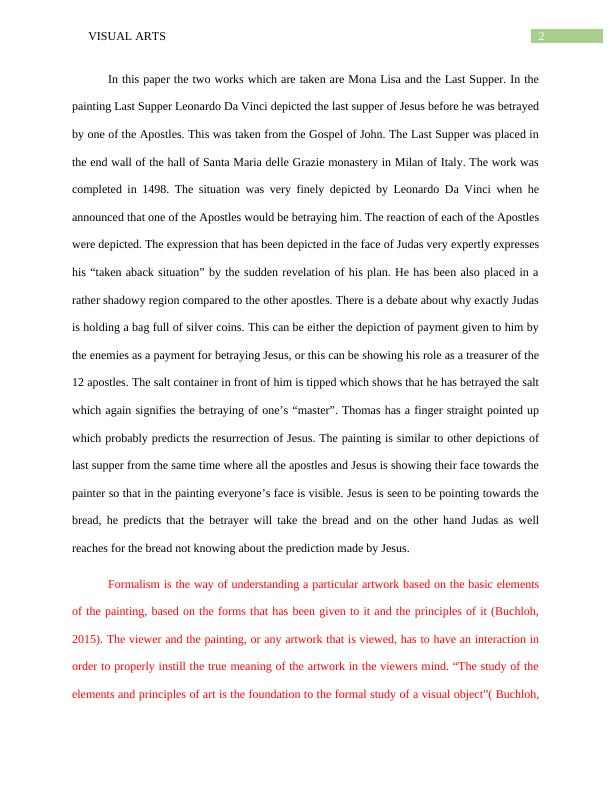Visual Arts: An Analysis of Leonardo da Vinci's Mona Lisa and The Last Supper
6 Pages1602 Words282 Views
Added on 2023-06-13
About This Document
This article provides an analysis of two of Leonardo da Vinci's most famous works of visual art, Mona Lisa and The Last Supper. The author discusses the composition, formalism, and subject matter of these Renaissance masterpieces. The Last Supper depicts the last supper of Jesus before he was betrayed by one of the Apostles, while Mona Lisa is a portrait of a woman believed to be Lisa Gherardini, wife of a famous businessman of the Renaissance period. Both paintings are expertly crafted with intricate details that reveal the mind of the subjects and amaze the viewer.
Visual Arts: An Analysis of Leonardo da Vinci's Mona Lisa and The Last Supper
Added on 2023-06-13
ShareRelated Documents
End of preview
Want to access all the pages? Upload your documents or become a member.
Leonardo Da Vinci: The Renaissance Man and Master Painter
|6
|1194
|83
Artist of the past and current times PDF
|3
|385
|37
Portrait Techniques: Incorporating Romanticism, Renaissance, and Baroque Styles
|3
|768
|447
[Doc] ANALYSIS OF PIETA - 2022
|5
|664
|29
Comparison of Society during Early Renaissance in Europe to Contemporary Society
|5
|936
|132



